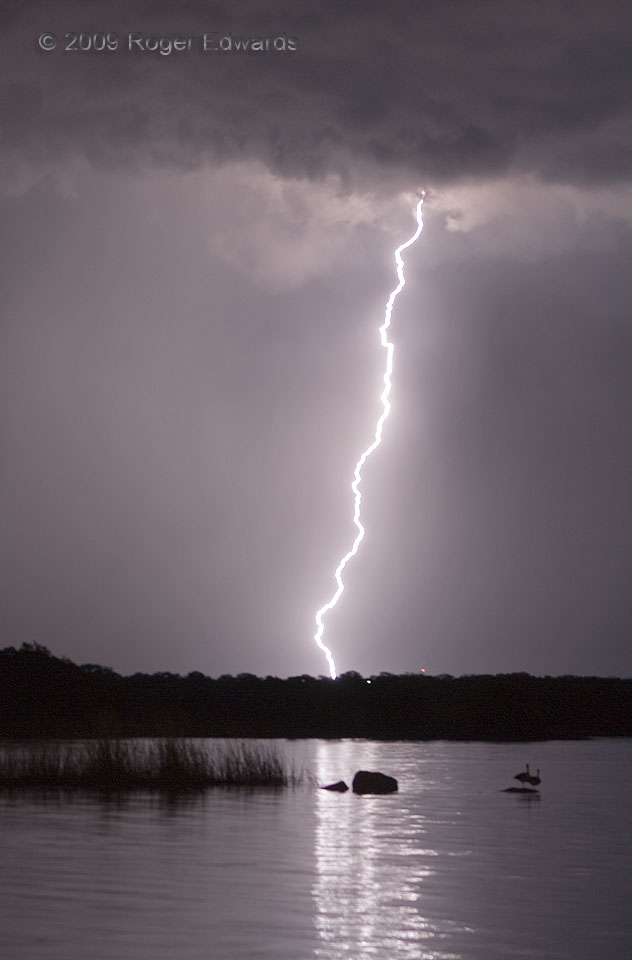A ribbon stroke, with no apparent branching, cut the night sky behind a southern Oklahoma impoundment, as a pair of honking geese (lower right) stood by. We heard the geese somewhere out there, and only saw their specific location when looking at this image later. Earlier visible CG strokes, both from a separate supercell and from this elevated storm, displayed intricate forking—the signature residue of aborted step-leader branches. This was an exception. Daytime lightning photos usually are reactionary, and as such, fail to capture the first (forked) return stroke, instead showing subsequent, unbranched flashes within the same primary return channel. But this one was a nocturnal time exposure, all strokes in the channel captured from start to finish, and it just didn’t branch. This specimen begs the question: Since many step leaders fork hither and yon, why do some simply fail to seek more than one path of least resistance?
4 SSE Ardmore OK (8 May 9) Looking ENE
34.1131, -97.1082
